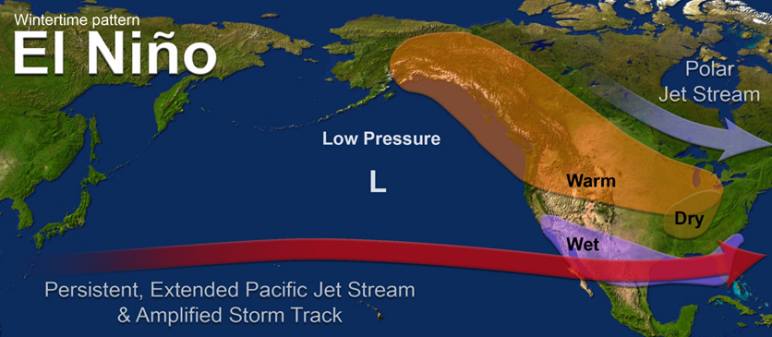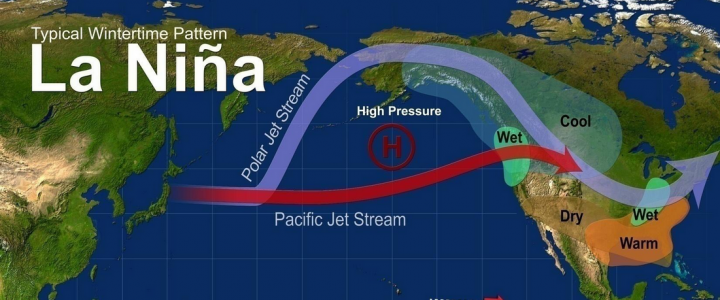12.5 El Nino and La Nina
Short-term changes in regional and global climate are frequent, with the largest and most important of these is the El Niño Southern Oscillation (ENSO). The ENSO drives changes in climate that are experienced around the world about every two to seven years.

In a typical year, the trade winds blow across the Pacific Ocean near the equator from east to west (toward Asia). A low-pressure cell rises above the western equatorial Pacific, warming the ocean surface water in the western Pacific Ocean, raising sea levels by one-half meter because of thermal expansion. Along the western coast of South America, Peru Current carries cold water northward and then westward along the equator with the trade winds. Consequentially, upwelling brings cold, nutrient-rich waters from the deep sea to the surface near Peru.
In an El Niño year, when the water temperature reaches around 28 degrees Celsius (82 degrees Fahrenheit), the trade winds weaken or reverse direction and blow east (toward South America). Warm water is dragged back across the Pacific Ocean and piles up off the west coast of South America. With warm, low-density water at the surface, upwelling ceases to occur, causing nutrients in the water to become scarce, causing plankton populations to decline. Since plankton forms the base of the food web, fish cannot find food, and fish numbers decrease. All the animals that eat fish, including birds and humans, are affected by the decline in fish.
By altering atmospheric and oceanic circulation, El Niño events change global climate patterns. Some regions receive more than average rainfall, including the west coast of North and South America, the southern United States, and Western Europe. Drought occurs in other parts of South America, the western Pacific, southern and northern Africa, and southern Europe.
An El Niño cycle lasts only a few years, with normal circulation patterns resuming. Sometimes circulation patterns bounce back quickly and remarkably, called La Niña.

During a La Niña year, as in a typical year, trade winds move from east to west, and warm water piles up in the western Pacific Ocean. Ocean temperatures along coastal South America are colder than average (instead of warmer, as in El Niño). Cold water reaches farther into the western Pacific than usual.
Other significant oscillations are smaller and have a local, rather than global, effect. The North Atlantic Oscillation mostly alters the climate in Europe. The Mediterranean also goes through cycles, varying between being dry at sometimes, and warm and wet at others. (Dastrup, 2014)

